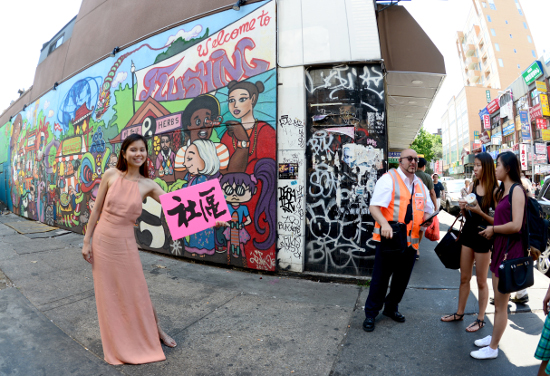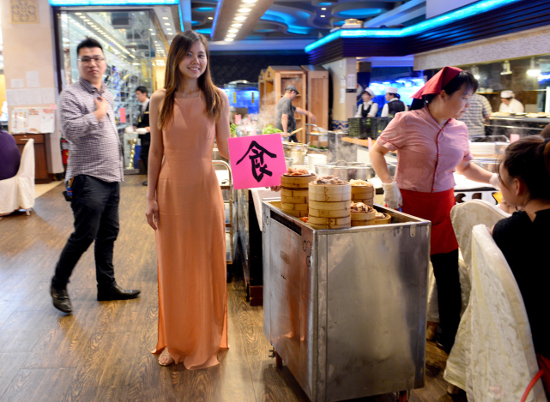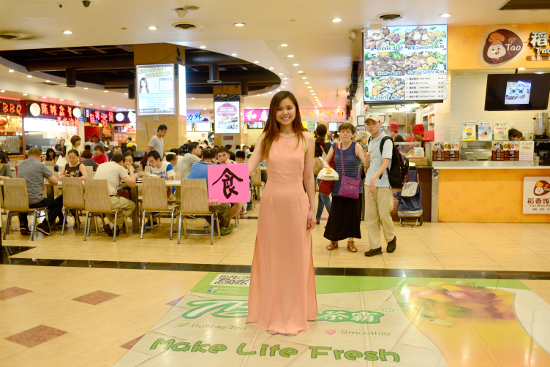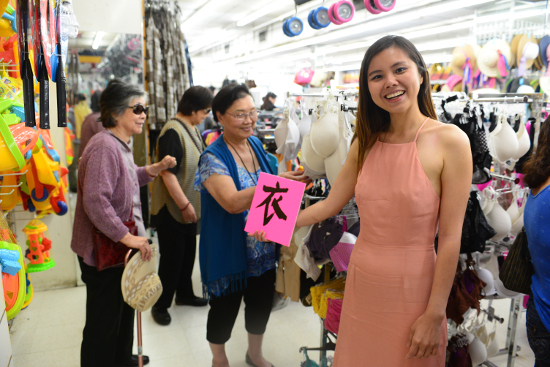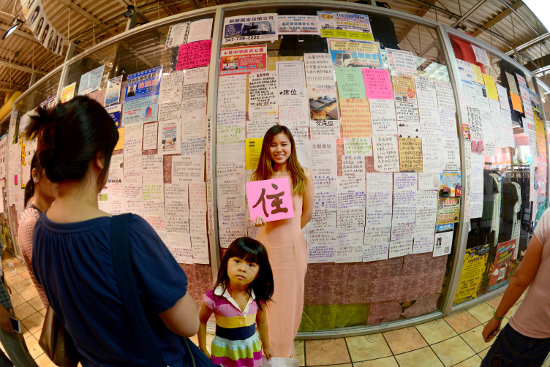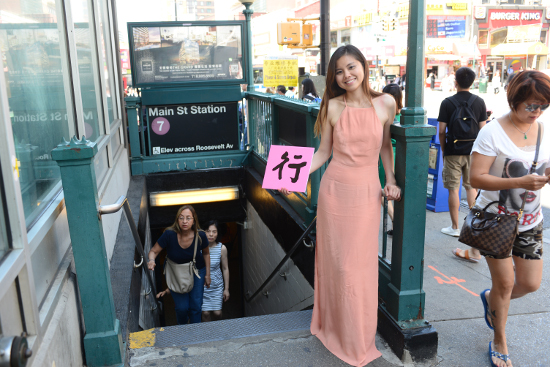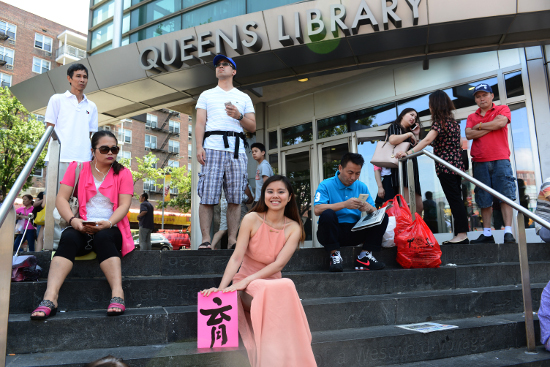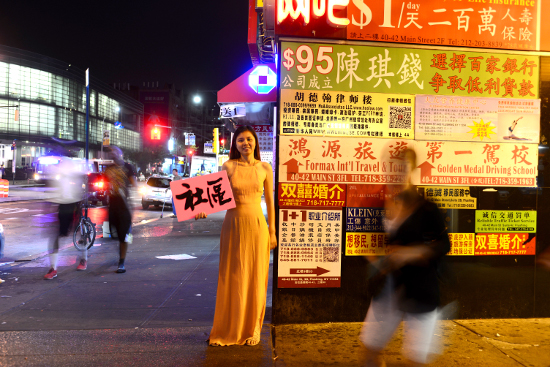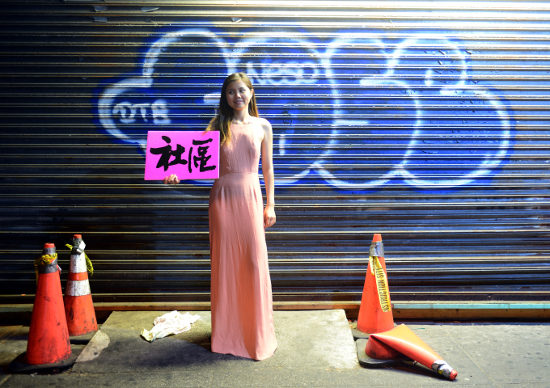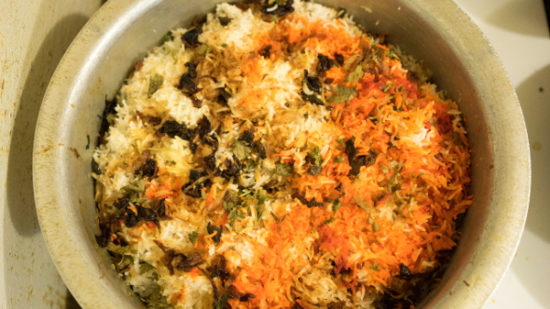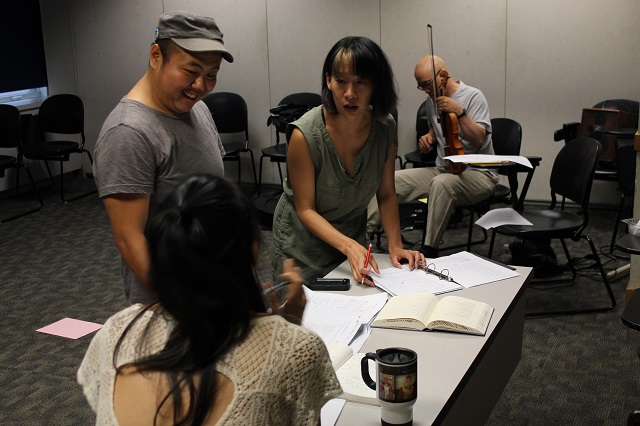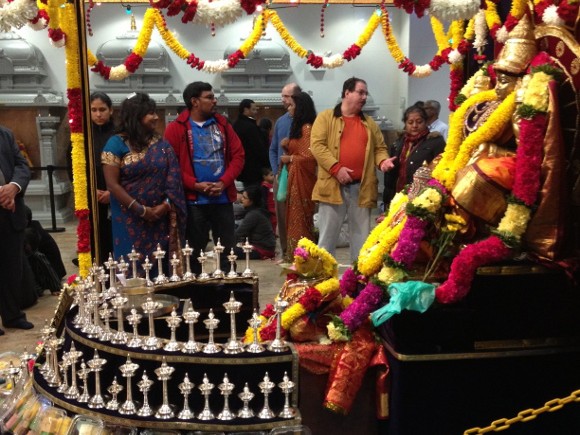A young immigrant takes us around Flushing, the neighborhood that she has adopted as her home.
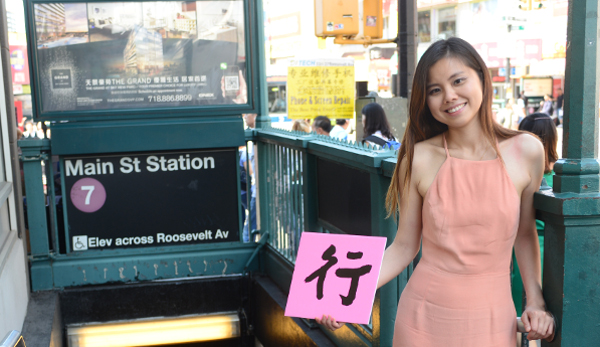
August 10, 2016
Read the story in Chinese here.
I was born to a middle class family in a small town in Taiwan. In 2006, I immigrated to the United States with my family, and we settled in Fresh Meadows, in New York City.
Like many immigrants who have decided to live close to people with whom they share the same culture, my family opted live in Fresh Meadows, the suburb of Flushing. This northeastern neighborhood of Queens has the second largest Chinese immigrant community in New York City.
I remember the first time I came to Flushing; it was a major culture shock for me. The crowded streets, the people, and even the taste of the food in Flushing are nothing that I have seen or experienced before.
I was crying inside because this was not the New York City that I thought I knew. This is not the New York City that I’ve known from Woody Allen’s movies! I felt like I am in a Third World country and not in the United States.
However, having lived in this neighborhood for 10 years, I have learned to adapt to this community and to adopt this community as my home.
Everyday, I board the 7 train on Main Street subway station to go to work; I shop at the Chinese supermarket for grocery; I dine at the food courts; I buy affordable but pretty clothes at the mini malls; I go to Queens library to study and to learn; and once in a while, I go to Karaoke with my friends for entertainment.
Every time I return to New York City after a trip, the first thing that I do is to go to the food court in Flushing to have a bowl of soup. This has become a ritual for me; I call it my welcome-back-home ritual.
In this photo essay, I want to show you my community – the exuberance and vitality of Flushing, the NYC neighborhood that 33,000 Chinese Americans like me call home.
Community (??)
Flushing, a diverse community
This mural is called “Flushing’s World Fair,” because Flushing Meadows Corona Park was host to the 1964 New York World’s Fair. It also shows that Flushing is a community of people coming from all parts of the world. Although the Flushing’s population is predominantly Chinese, Flushing is a diverse community. According to 2010 Census, of the approximately 72,000 people in Flushing, 69.2 percent is Asian, 14.9 percent is Hispanic, 9.5percent is white, 4.2 percent is black, with 2,.2 percent coming from races other than these mentioned.
Main Street, the heart of Flushing
I am at the intersection of Main Street and KissenaBoulevard , the starting point of the heart of Flushing. Main Street is a major north-south street in Queens in New York City, extending from Queens Boulevard in Briarwood to Northern Boulevard in Flushing. Kissena Boulevard runs from Main Street in Flushing to Parsons Boulevard in Kew Gardens Hills.
Downtown Flushing is centered on the northern end of Main Street. It is a large commercial and retail area and is the fourth largest central business district in New York City.
Food???
Food, the God of the Chinese people
There is a Chinese that saying goes, “Food is the God of the people.” And yes, Chinese people love to eat. In Flushing, you can have authentic Chinese cuisine in almost any restaurant.
I am at a seafood restaurant that serves dim sum during brunch hours daily. Dim sum is probably the most popular eats in the Chinese culture. Dim sum is usually linked to the older tradition of yum cha (drinking tea). That is why the Chinese phrase for “go to the restaurant to eat dim sum” is yum cha.
For many immigrant families, yum cha is considered a weekend family treat and a celebration of special holidays.
Food court, the one-stop-shop for foods
You can’t miss the food courts in Flushing. They’re one-stop-shops where you can sample a variety of authentic ethnic food. There are over 10 food courts in Flushing. Local residents love to dine at the food courts because it offers a wide variety of choices and fast food fare.
I am in the food court of New World Mall, the largest food court in the neighborhood, with over 30 different ethnic food vendors. Popular items in this food court includes teriyaki, hand-pulled noodles, ma la (spicy) noodles, shaved ice, and crepes.
Clothing (??
Mini-mall, the one-stop-shop for clothing
Searching for inexpensive and unique clothing? Mini-malls in Flushing are your best bet. Mini-malls are storefronts shared by several merchant vendors. There are over 10 mini-malls in Flushing, most of them are located on Main Street or Roosevelt Avenue. Local residents often shop for clothing at mini-malls because these shops carry affordable and unique clothing that you won’t find at the giant chain stores.
I am in one of the popular clothing vendors in a mini-mall on Roosevelt Avenue. The store resembles an in-door flea market. It is often crowded, so when you go shop at a mini-mall, be prepared to squeeze yourself between tight spaces.
Housing (??
Housing bulletin board, the Craig’s List for immigrants
You can see a wall of posters advertising housing and real estate plastered on bulletin boards in ethnic supermarket and mini-malls in Flushing. Local residents, especially the newly arrived immigrants, rely heavily on bulletin boards for housing needs and job-hunting.
I am in front of a bulletin board inside a mini-mall on Kissena Boulevard. This is one of the biggest bulletin boards in Flushing. There are at least 300 posters about housing on this bulletin board.
Transportation (??
Main Street Station, the gateway to Flushing
The No. 7 subway line is the main commuting route to and from downtown Flushing. The No.7 starts at Main Street Station in Flushing, and now ends at the Hudson Yard Station on 34th Street and11th Avenue in Manhattan.
I am at the entrance of Main Street Station on Roosevelt Avenue. Flushing residents rely heavily on the 7 train. According to the MTA, Main Street Station in Flushing had 92,500 metro card-swipes from riders paying full fares, and 10,800 metro card-swipes from riders paying with monthly Metro Card in the first week of July alone.
Education (??
Flushing library, the sanctuary of the community
I am here sitting by the entrance of Flushing Library with several friends who hang around in the library. This library is a big part of the community life in Flushing. Not only it has a comprehensive catalog of informative, entertaining and multi-language books, it is also a cultural institution that provides programs aimed at helping immigrants, such as adult literacy and cultural events.
Every morning, there are lines of people getting into the Flushing library. Students come to the library to access resources for homework, job seekers come for employment hunt, immigrants take ESL classes here and children come for story times. It is also a meeting space for everyone in the community.
Entertainment ???
Singing karaoke is one of the most popular entertainments among Chinese and Asian immigrants. Local residents love to visit karaoke boxes, also know as KTV, to sing off the workday stress. A KTV offers small or medium-sized rooms with sing-along equipment that are rented to customers by the hour.
I am in a private room in a karaoke bar called DIY KTV in Flushing. This KTV is the largest one in neighborhood. It has three stories and has a variety of amenities including food service. I am with a group of high school students who told me they come to the place to “sing off the stress”.
Community (??)
Flushing at night, when working people head back home
Flushing is a community that never sleeps. Many residents work in the city. They troop to the 7 train station to head to the city and come back to Flushing at night. As a result, the streets of Flushing are very vibrant even at night.
I am at the intersection 41st Avenue and Main Street, right next to the entrance to the Long Island Rail Road. It was at 1.00 am when I took this shot. You can see in this photo that there are people coming out from the LIRR.
The wall has been turned into a bulletin board with posters targeting the immigrant community. Among the posts were from an employment agency, immigration law firm, Chinese-speaking accountant service, matchmaker service, driving school information, traffic ticket resolution center, travel agency, etc.
Flushing, what is your future?
I am standing in front of a closed storefront. It used to be the location of Au Jian supermarket, the first ethnic supermarket that opened on Main Street. The supermarket closed down in March, 2012 and has been a homeless shelter since then. ‘
From February to March in 2012, four Flushing supermarkets closed down. Several reasons were cited for the shutdown, namely, outdated operation management, change in consumer behavior, destructive competition, and rising rents. These have been on-going issues in the neighborhood. (Photo 11)
A lot of things have happened since my family and I landed in Flushing 10 years ago. I know that this neighborhood will continue to change and grow. But the more Flushing changes, the more it remains the same for me – my home away from home.
Special Thanks
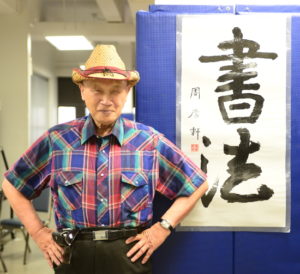 Special thanks to ??? (Thomson Chou), who contributed the calligraphy in the photographs. ???Thomson Chou emigrated from Taiwan in the 70s and has resided in Flushing since 1980. He is an amateur calligrapher and a lover of Beijing Opera.
Special thanks to ??? (Thomson Chou), who contributed the calligraphy in the photographs. ???Thomson Chou emigrated from Taiwan in the 70s and has resided in Flushing since 1980. He is an amateur calligrapher and a lover of Beijing Opera.
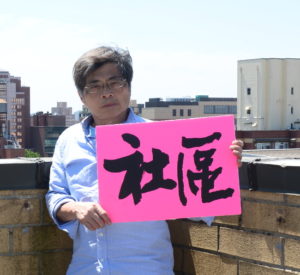 Special thanks to ??? (Joseph Hsu), who contributed the photos. Joseph Hsu emigrated from Taiwan in the 90s and has resided in Flushing since 1990. He has been a staff photojournalist at World Journal covering Flushing since 1990.
Special thanks to ??? (Joseph Hsu), who contributed the photos. Joseph Hsu emigrated from Taiwan in the 90s and has resided in Flushing since 1990. He has been a staff photojournalist at World Journal covering Flushing since 1990.

